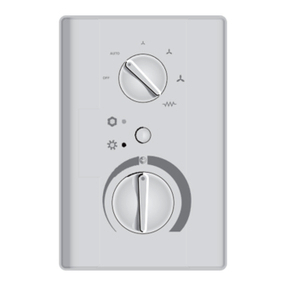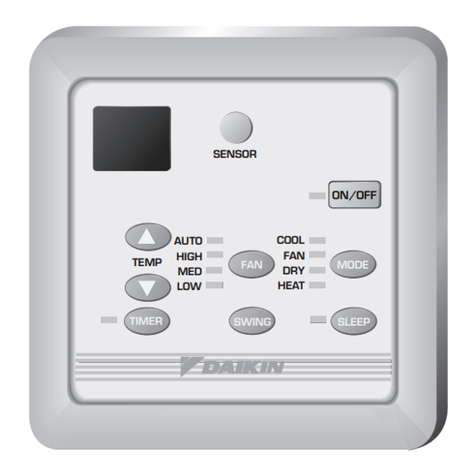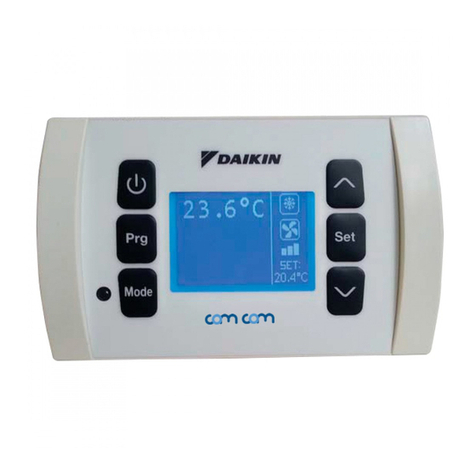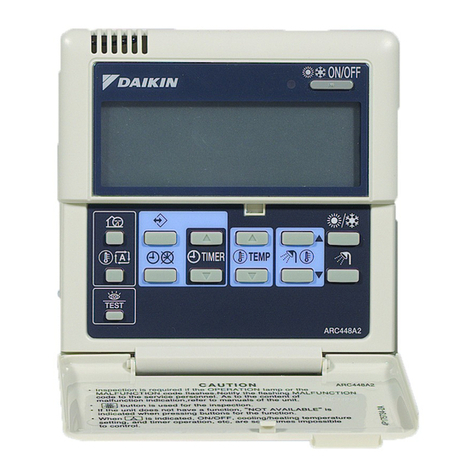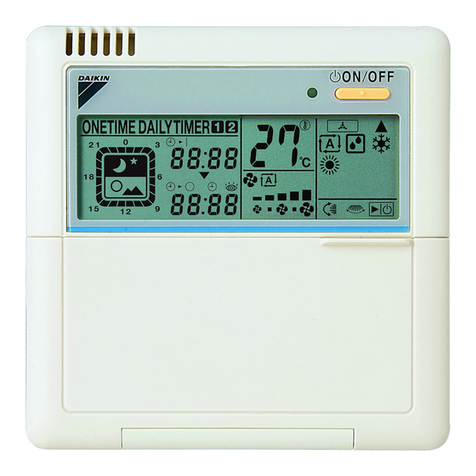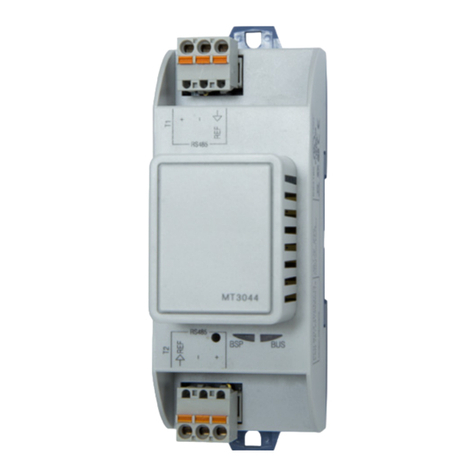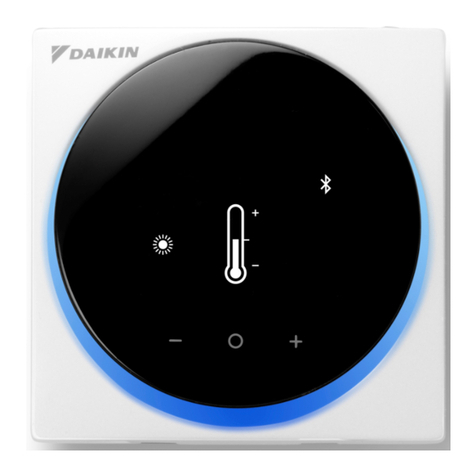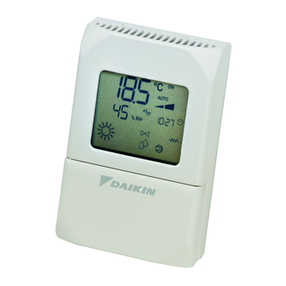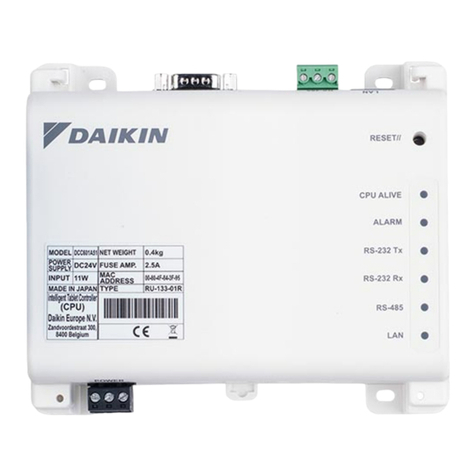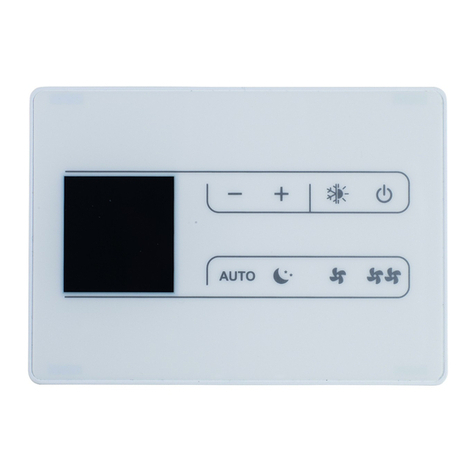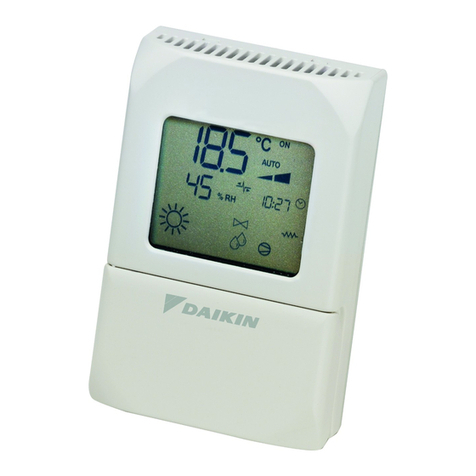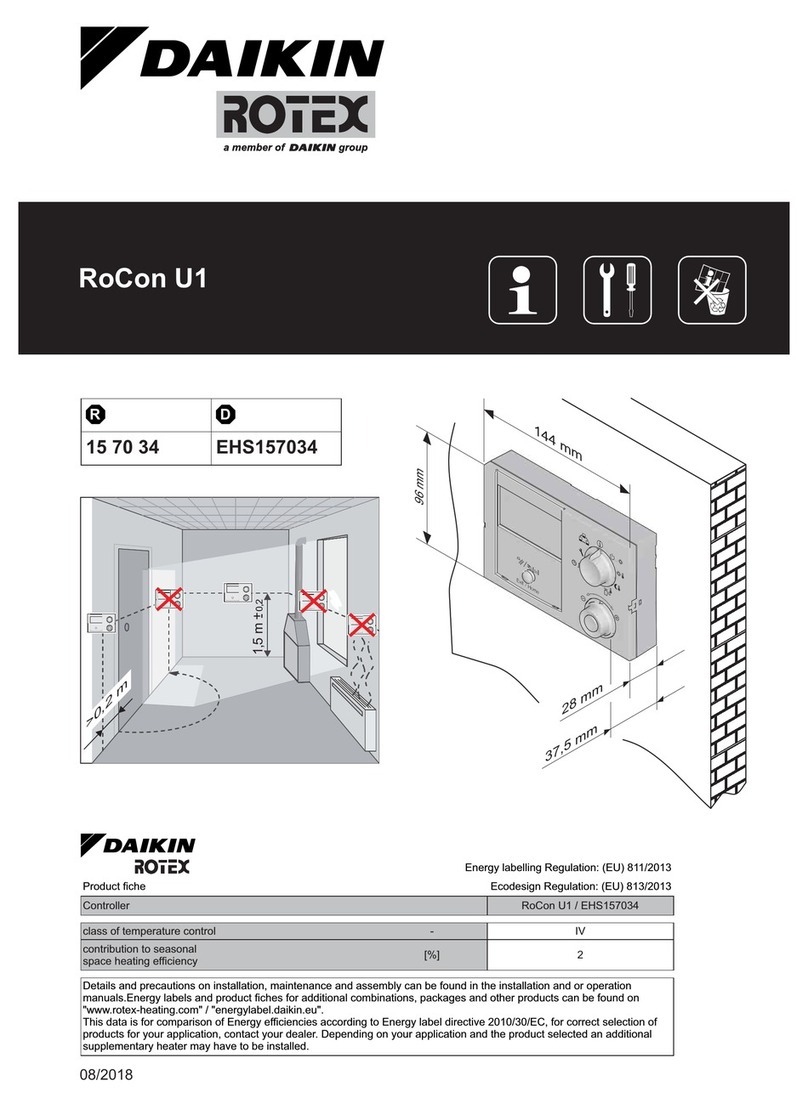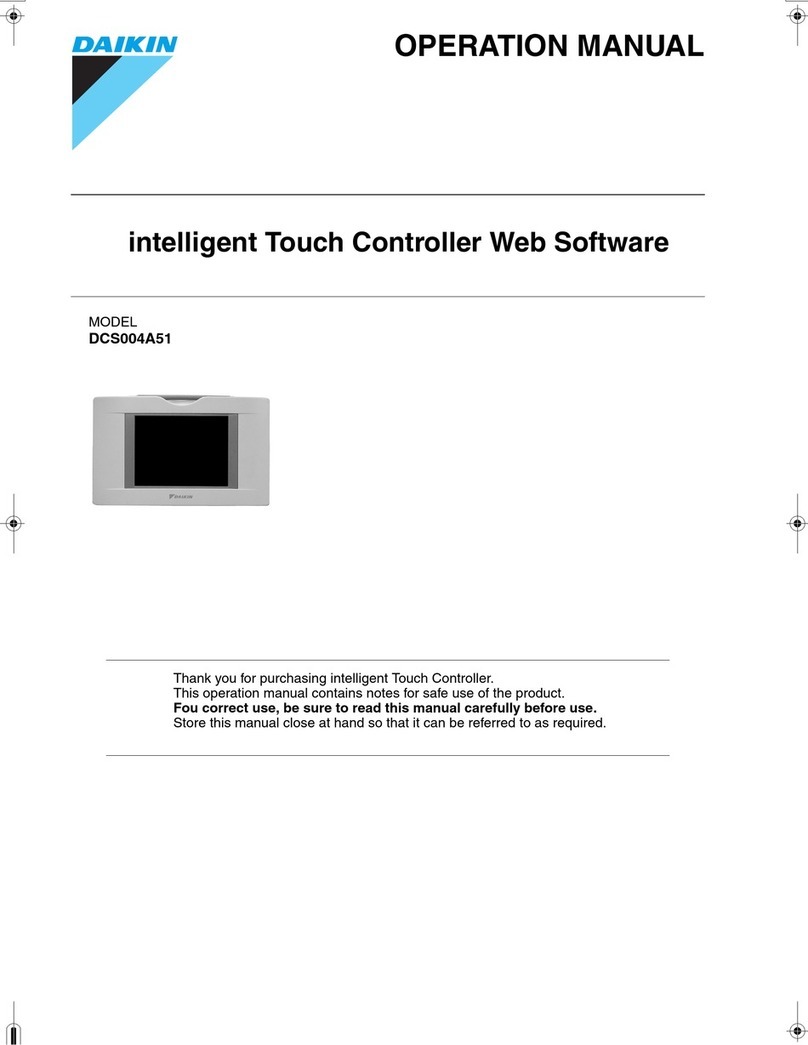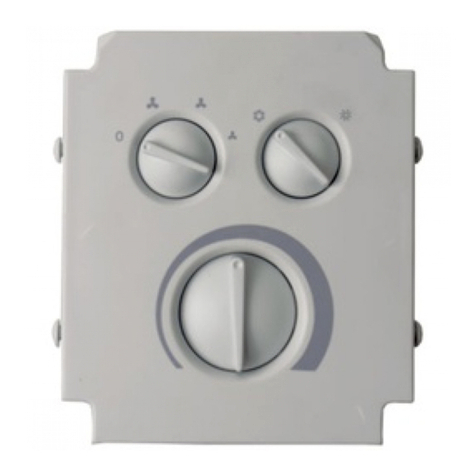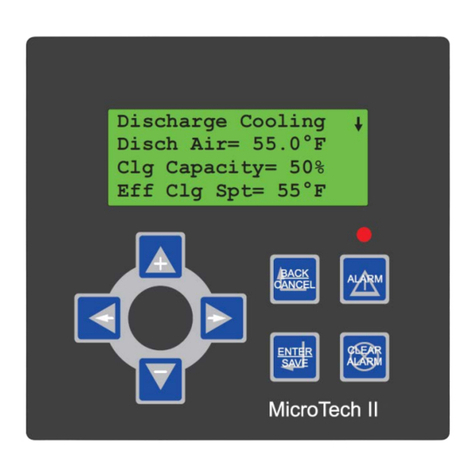
7
Table of contents
1 Information about this manual .......................................................... 8
2 Hazard information ........................................................................... 8
3 Daikin Home Controls .....................................................................11
4 Function and accessory overview .................................................. 12
5 Mounting......................................................................................... 13
5.1 Screw mounting .........................................................................13
5.2 DIN rail mounting ....................................................................... 14
6 Start-up........................................................................................... 14
6.1 Installation instructions ..............................................................14
6.2 Installation.................................................................................. 16
6.3 Behaviour after switching on the mains voltage ........................ 17
6.4 Connecting further DHC accessories ........................................ 18
6.4.1 Connecting to the DHC Access Point
via the ONECTA app.........................................................18
7 Manual operation............................................................................ 19
7.1 Switchingon/oheatingzones ..................................................19
8 Troubleshooting.............................................................................. 19
8.1 Duty cycle .................................................................................19
8.2 Errorcodesandashingsequences .........................................20
8.2.1 Flashing sequences of the system LED .......................... 20
8.2.2 Flashing sequences of the channel LED ......................... 21
9 Restore factory settings.................................................................. 22
10 Maintenance and cleaning ............................................................. 23
11 General information about radio operation..................................... 24
12 Technicalspecications.................................................................. 25
